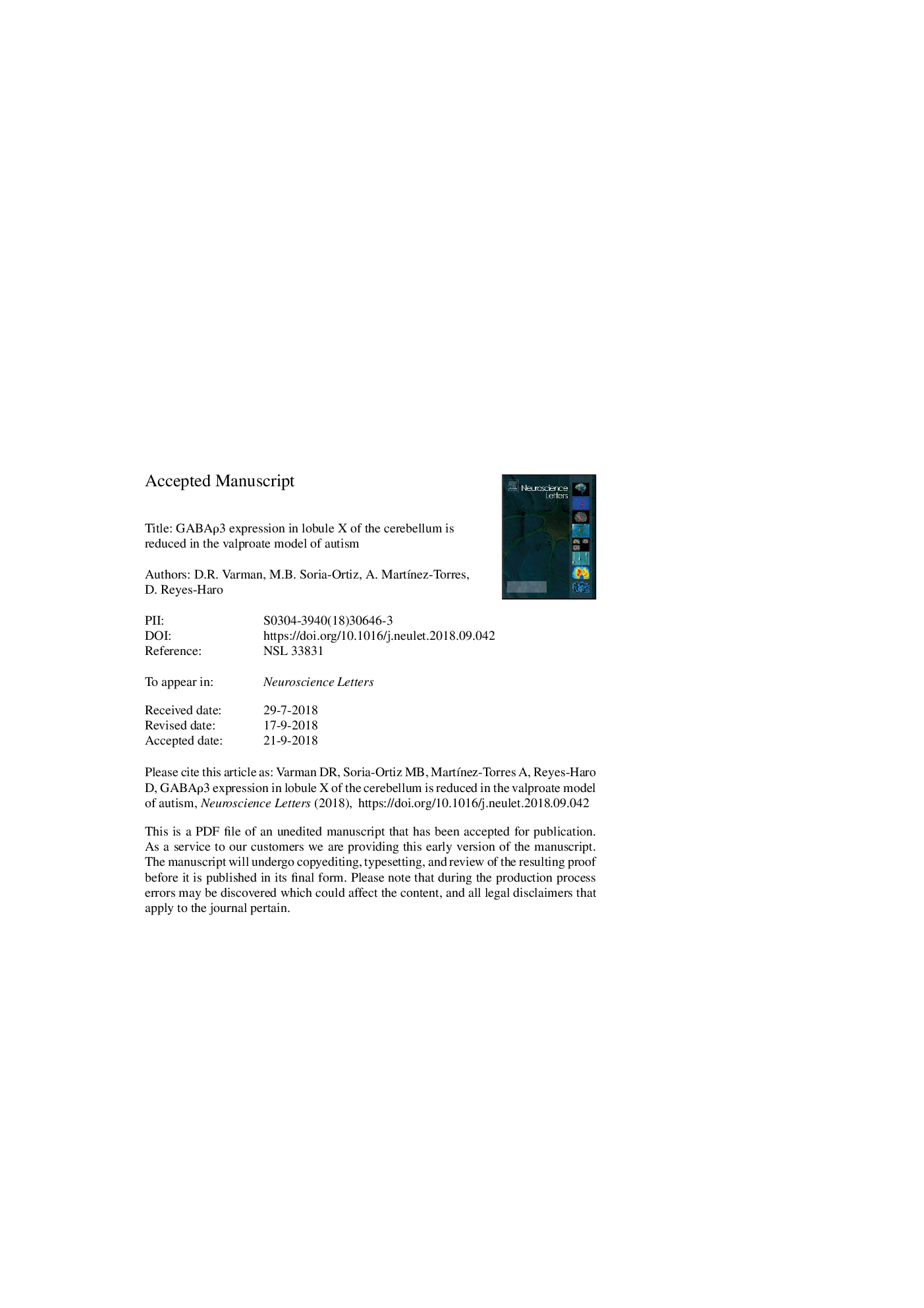| Article ID | Journal | Published Year | Pages | File Type |
|---|---|---|---|---|
| 11033425 | Neuroscience Letters | 2018 | 16 Pages |
Abstract
Autism spectrum disorder (ASD) is a group of developmental disorders characterized by social interaction deficits, communication impairments, and stereotyped and repetitive behaviors. Additionally, impairments in the GABAergic circuitry have been associated with ASD. Several studies have shown that dysfunction of the cerebellum is a hallmark of ASD, and postmortem studies in humans reported a reduced density of Purkinje cells (PCs) together with an abnormal expression of GABAA subunits, among which GABAÏ3âis expressed in early postnatal development, forms homomeric receptors with high affinity to the agonist (GABA EC50 â¼ 3âμM) and desensitize very little upon activation. Thus, we tested if the expression of GABAÏ3 was modified by prenatal exposure to valproate (VPA), a well-known murine model of autism. The latency to find the nest increased in VPA-treated mice when compared to controls at postnatal day 8 (P8). Immunofluorescence studies showed a reduced expression of GABAÏ3 in Purkinje cells (PCs) and ependymal glial cells (EGCs) from lobule X of VPA-treated mice. Finally, the expression of GABAÏ3 increases linearly throughout normal development of the cerebellum, but this pattern is disrupted in the VPA model of autism. We conclude that the expression of GABAÏ3 is reduced in PCs and EGCs from lobule X of the cerebellum in the VPA model of autism. Thus, GABAÏ3 may be a relevant marker for ASD etiology.
Keywords
Related Topics
Life Sciences
Neuroscience
Neuroscience (General)
Authors
D.R. Varman, M.B. Soria-OrtÃz, A. MartÃnez-Torres, D. Reyes-Haro,
